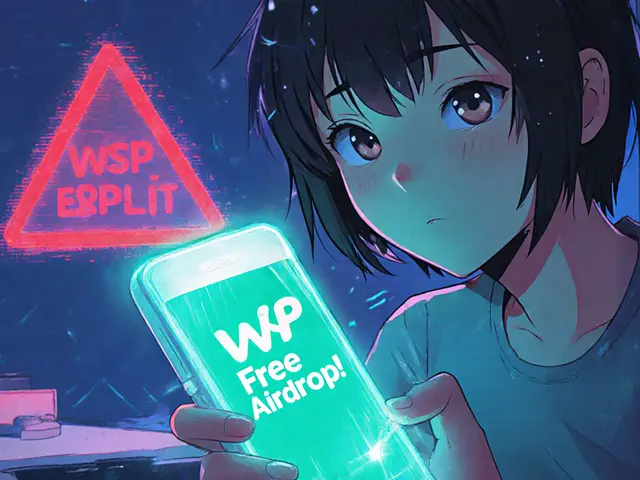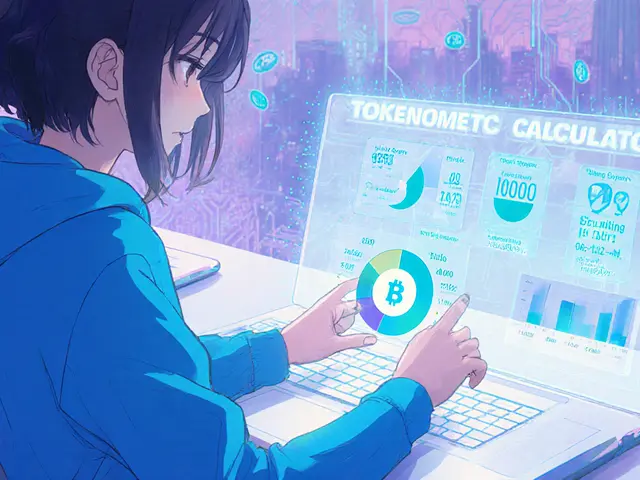Pharma Supply Chain Tracker
This interactive simulates how a drug moves through the supply chain using blockchain technology. Each step is recorded immutably on a ledger.
Blockchain Ledger Transactions
When you pick up a prescription, you expect the pill bottle to contain the exact medication the doctor ordered, not a fake or expired product. Blockchain Prescription Drug Tracking is a distributed‑ledger system that records every hand‑off of a drug-from manufacturer, through distributor, to the pharmacy and finally the patient-using an immutable, time‑stamped ledger. By turning each transfer into a verified transaction, the technology makes it far harder for counterfeit meds to slip through and gives regulators a single source of truth.
TL;DR
- Blockchain creates an unchangeable record of every drug movement, cutting counterfeit risk.
- BRUINchain, a pilot backed by the FDA, shows real‑time tracking with 50‑ms latency.
- Hybrid designs pair blockchain with IPFS to store large prescription files securely.
- Key benefits: transparency, patient‑controlled access, automated compliance.
- Main hurdles: energy use, data‑standard gaps, and evolving legal frameworks.
Why the Pharma Supply Chain Needs a New Approach
Traditional tracking relies on centralized databases that are vulnerable to single points of failure, manual data entry errors, and delayed reporting. In the United States, the Drug Supply Chain Security Act (DSCSA) DSCSA requires an electronic, interoperable system to trace prescription drugs at the package level but gives little guidance on which technology to use. Counterfeit medications, which the World Health Organization estimates account for 10% of global drug sales, exploit these weaknesses. Prescription‑drug abuse also thrives when monitoring programs lack up‑to‑date data. A trustworthy, end‑to‑end ledger can address all three problems at once.
How the Technology Works
Most implementations follow a hybrid model:
- Capture: At each checkpoint-manufacturing, wholesaling, dispensing-a scanner reads a 2D barcode and creates a transaction record.
- Write to Ledger: The transaction, signed with the participant’s private key, is broadcast to a permissioned blockchain network.
- Off‑Chain Storage: Large data objects such as full e‑prescriptions are encrypted and stored on the InterPlanetary File System (IPFS a peer‑to‑peer content‑addressed storage network that off‑loads bulky files from the blockchain).
- Linking: A hash of the IPFS file is written to the blockchain, creating a permanent reference without bloating the ledger.
- Access Control: Patients receive a public‑key address; only they can decrypt the prescription using their private key, enabling patient‑controlled access.
Smart contracts-self‑executing code stored on the chain-automate compliance steps such as notifying the Prescription Drug Monitoring Program (PDMP) whenever a controlled substance is dispensed.
Real‑World Pilot: BRUINchain
The UCLA Health and LedgerDomain partnership built BRUINchain a blockchain‑based tracking system that operates in the pharmacist‑to‑patient ‘last mile’. Using commercial off‑the‑shelf hardware, the system achieves 50‑millisecond latency, meaning a scanned package appears on the ledger almost instantly. Key capabilities include:
- Automatic flagging of expired or improperly coded packages.
- Real‑time alerts to manufacturers when a suspect batch is identified.
- Quarantine workflows that isolate illegitimate products before they reach the patient.
During the DSCSA pilot, BRUINchain reduced paperwork by over 60% and cut average notification time from hours to seconds. The pilot proved that a blockchain can handle the high transaction volume of a busy pharmacy without slowing operations.
Benefits Over Traditional Systems
Transparency: Every stakeholder sees the same immutable record, eliminating data silos. Traceability: If a recall occurs, the exact batch locations can be identified within minutes, not days. Security: Cryptographic signatures prevent tampering and reduce e‑prescription forgery. Patient Empowerment: Because the prescription hash lives on a public ledger, patients can verify that the medication they receive matches the doctor’s order, without exposing personal health information.
Pharmacovigilance also gains a boost. When an adverse event is reported, the smart contract can push the incident to regulators and update the PDMP automatically, cutting down the lag that often hampers safety monitoring.
Challenges Still on the Horizon
Energy consumption remains a concern, especially for public‑type consensus mechanisms. Most pilots, including BRUINchain, use permissioned networks with proof‑of‑authority or Byzantine Fault Tolerance, which are far less power‑hungry than proof‑of‑work. Standardizing data inputs-barcode formats, prescription schema, and patient identifiers-requires industry‑wide agreement; without it, each system risks becoming an isolated island.
Legal and ethical questions also linger. Who owns the ledger data? How do privacy regulations like GDPR intersect with a permanently immutable record? Regulators are drafting guidance, but clear, enforceable frameworks are still in development.
Blockchain vs. Traditional Tracking: A Quick Comparison
| Aspect | Blockchain Solution | Traditional System |
|---|---|---|
| Data Integrity | Immutable ledger; cannot be altered after consensus | Editable databases; vulnerable to insider changes |
| Visibility | All authorized parties share a single version of truth | Separate siloed reports; delayed reconciliation |
| Speed of Alerts | Near real‑time (milliseconds) | Batch processing; hours to days |
| Counterfeit Prevention | Cryptographic verification of each package | Reliance on manual barcode checks |
| Compliance Automation | Smart contracts trigger PDMP updates automatically | Manual entry; prone to errors |
What the Future May Hold
Researchers are experimenting with greener consensus algorithms, such as proof‑of‑authority combined with periodic checkpointing, to slash energy use. At the same time, industry groups are drafting a universal data‑exchange standard that would let any blockchain platform speak the same “language” of barcodes, prescription fields, and patient identifiers.
Regulators are expected to publish a definitive DSCSA amendment that explicitly references blockchain as an acceptable method for compliance reporting by 2026. If that happens, adoption could jump from pilot projects to large‑scale rollouts across hospital networks and retail chains.
For patients, the biggest win will likely be a mobile wallet that displays a QR‑code linked to the drug’s ledger entry. Scan it at the pharmacy, and you instantly see the drug’s provenance, expiration date, and any alerts-no phone call to the manufacturer needed.
Next Steps for Stakeholders
- Pharmacies: Start testing permissioned blockchain platforms with existing barcode scanners; focus on integration with current pharmacy management software.
- Manufacturers: Publish standardized 2D barcode data in a machine‑readable format and join industry consortia working on data‑exchange standards.
- Regulators: Issue clear guidelines on ledger ownership, data retention periods, and cross‑border data flow.
- Patients: Advocate for transparent access to their medication’s ledger entry through secure mobile apps.
Frequently Asked Questions
How does blockchain stop counterfeit drugs?
Each drug package gets a unique, cryptographically signed barcode. When the package moves, the transaction is added to an immutable ledger. If a counterfeit tries to use a copied barcode, the ledger will flag the mismatch because the signature won't match the original issuer’s public key.
Can patients view the blockchain record?
Yes. With a patient‑controlled wallet, the user can decrypt the hash that points to their prescription data stored on IPFS. The wallet shows provenance, expiration, and any alerts without exposing personal health details.
Is the technology ready for nationwide use?
Pilot projects like BRUINchain have proven technical feasibility and regulatory acceptance. Widespread adoption still depends on standardized data formats, clearer legal guidance, and cost‑effective, low‑energy consensus mechanisms.
What role do smart contracts play?
Smart contracts automatically enforce rules-like sending a real‑time update to the Prescription Drug Monitoring Program when a controlled substance is dispensed-removing the need for manual data entry and reducing human error.
Will blockchain increase drug costs?
Initial setup costs exist, but the reduction in counterfeit losses, paperwork, and recall turnaround time can offset expenses. Over time, economies of scale are expected to lower the overall impact on drug pricing.






Comments
Kate Nicholls
October 1, 2025 AT 02:21 AMThe idea of a ledger that never changes sounds great until you think about who actually controls the chain. If a handful of big pharma companies run the nodes, they could decide what counts as a “valid” transaction and silently squeeze out smaller players. Moreover, the energy cost of even permissioned blockchains isn’t negligible when you scale to millions of prescriptions a day. And let’s not forget the regulatory nightmare of making immutable data compliant with privacy laws like GDPR. Bottom line: the technology is promising, but the governance model will make or break it.
Kate Roberge
October 1, 2025 AT 04:01 AMHonestly, pushing all that responsibility onto a closed‑door consortium just swaps one set of gatekeepers for another.
Charles Banks Jr.
October 1, 2025 AT 05:41 AMOh sure, let’s trust a digital ledger to stop fakes when the real problem is shady distributors who already have the cash to pay off auditors.
Ben Dwyer
October 1, 2025 AT 07:21 AMLook, the tech can add visibility, but you still need strong enforcement on the ground – no point in a perfect chain if the people at the ends ignore it.
VICKIE MALBRUE
October 1, 2025 AT 09:01 AMBlockchain could actually speed up recalls.
Waynne Kilian
October 1, 2025 AT 10:41 AMi think its more than just speed; it changes how we see trust. when each step is logged, you get a story of the drug's life that cant be erased. that kind of narrative helps patients feel safe, even if they're not tech‑savvy. yeah, there will be bugs, but the philosophy of transparency is worth the effort. plus, having a shared ledger reduces the "us vs them" mentality between manufacturers and pharmacies.
Naomi Snelling
October 1, 2025 AT 12:21 PMEveryone talks about blockchains like they’re a silver bullet, but they’re just another way for Big Pharma to embed hidden back‑doors. Once that data is out there, who’s to say it isn’t being harvested by shadowy agencies? And don’t forget the potential for a single point of failure if a quantum computer cracks the cryptography. It’s a fancy illusion of security while the real threats stay invisible.
Michael Wilkinson
October 1, 2025 AT 14:01 PMEnough with the fear‑mongering. The consensus algorithms used are permissioned and vetted, not open‑source chaos. If anyone wanted to exploit it, they'd target the supply chain directly, not the ledger. So stop treating a tool as a conspiracy.
Billy Krzemien
October 1, 2025 AT 15:41 PMFrom an implementation standpoint, integrating a permissioned blockchain with existing pharmacy management systems is surprisingly straightforward. Most vendors expose REST APIs, allowing the scanner software to post transaction data in real time. The smart contract layer can then enforce compliance checks automatically, reducing manual entry errors. Pilots have shown that latency stays under 100 ms, which is well within acceptable limits for busy dispensaries. Ultimately, the technology can enhance both safety and efficiency when rolled out thoughtfully.
april harper
October 1, 2025 AT 17:21 PMSounds solid, but pilots often ignore the messy reality of legacy systems.
MD Razu
October 1, 2025 AT 19:01 PMConsider the philosophical implications of embedding an immutable record into the very lifecycle of a medication. Each transaction becomes a digital imprint of trust, a timestamp that asserts not merely ownership but a moral guarantee of authenticity. When the patient scans the QR code, they are not just verifying a barcode; they are engaging in a ritual of accountability that bridges the gap between pharmaceutical intent and human need. This shift transforms the drug from a passive commodity into a participant in a decentralized narrative, one where every handoff is witnessed by an impartial ledger. Moreover, the integration of IPFS for ancillary data-such as prescribing notes or lab results-creates a bifurcated yet linked ecosystem: the blockchain for integrity, the distributed file system for scale. The hash of the prescription file, stored on the ledger, ensures that any alteration would be immediately detectable, preserving the sanctity of the original medical decision. Smart contracts, acting as autonomous agents, can enforce regulatory mandates without human bottlenecks, automatically alerting prescription drug monitoring programs when controlled substances change hands. This automation reduces the latency between dispensing and reporting from hours to seconds, potentially curbing abuse cycles before they proliferate. Energy consumption, often cited as a drawback, is mitigated in permissioned networks that employ Byzantine Fault Tolerance, which consumes a fraction of the power required by proof‑of‑work systems. Yet the broader challenge lies in standardizing data schemas across disparate stakeholders-manufacturers, distributors, pharmacies, and regulators-so that the ledger can speak a common language. Without such interoperability, each siloed implementation risks becoming an isolated island, undermining the very transparency it promises. Legal frameworks must evolve to address questions of data ownership, retention, and the right to be forgotten in an immutable context. The tension between permanence and privacy is not trivial; it demands careful policy crafting to reconcile blockchain’s strengths with individual rights. Finally, patient empowerment emerges as a tangible benefit: a mobile wallet that displays the drug’s provenance, expiration, and any safety alerts, granting individuals agency over their health data without exposing sensitive personal information. In sum, while technical hurdles remain, the convergence of blockchain, smart contracts, and decentralized storage offers a compelling vision for a more secure, accountable, and patient‑centric pharmaceutical supply chain.
Lindsay Miller
October 1, 2025 AT 20:41 PMThe detailed rundown makes it clear how each piece fits together. I especially like the idea of patients having a simple way to check their meds. It could really boost confidence in the system.
Katrinka Scribner
October 1, 2025 AT 22:21 PMWow, that sounds like a sci‑fi movie come to life! 🚀 The whole QR‑code‑to‑ledger thing could make our pharmacies feel like high‑tech hubs. 🌟 I’m excited to see how patients will actually use these wallets.
Clint Barnett
October 2, 2025 AT 00:01 AMPicture this: a bustling pharmacy, neon‑lit screens flashing ledger updates, and a patient tapping their phone like it’s a magic spell. The colorful data streams would be a feast for the eyes, turning a mundane pickup into a theatrical performance. And with every scan, a chorus of smart contracts hums in the background, silently enforcing the rules. It’s not just tech; it’s a narrative, a story where every character-manufacturer, distributor, pharmacist-plays their part flawlessly. If rolled out right, we’ll have a supply chain that’s as vibrant as a Broadway show.
Jacob Anderson
October 2, 2025 AT 01:41 AMSure, blockchain will make everything “transparent” until the next regulation forces us to delete half the ledger. Then we’ll be back to square one, only with more paperwork.
Carl Robertson
October 2, 2025 AT 03:21 AMOh, the drama of a perfect ledger meeting an imperfect world. It reads like a tragic play where the hero is doomed by its own brilliance.
Rajini N
October 2, 2025 AT 05:01 AMTo keep the story productive, a clear governance framework is essential. It should define node participation, data‑access rights, and compliance checkpoints, ensuring that the technology serves public health rather than corporate interests. By aligning technical standards with regulatory expectations, stakeholders can avoid the pitfalls of over‑promising and under‑delivering.